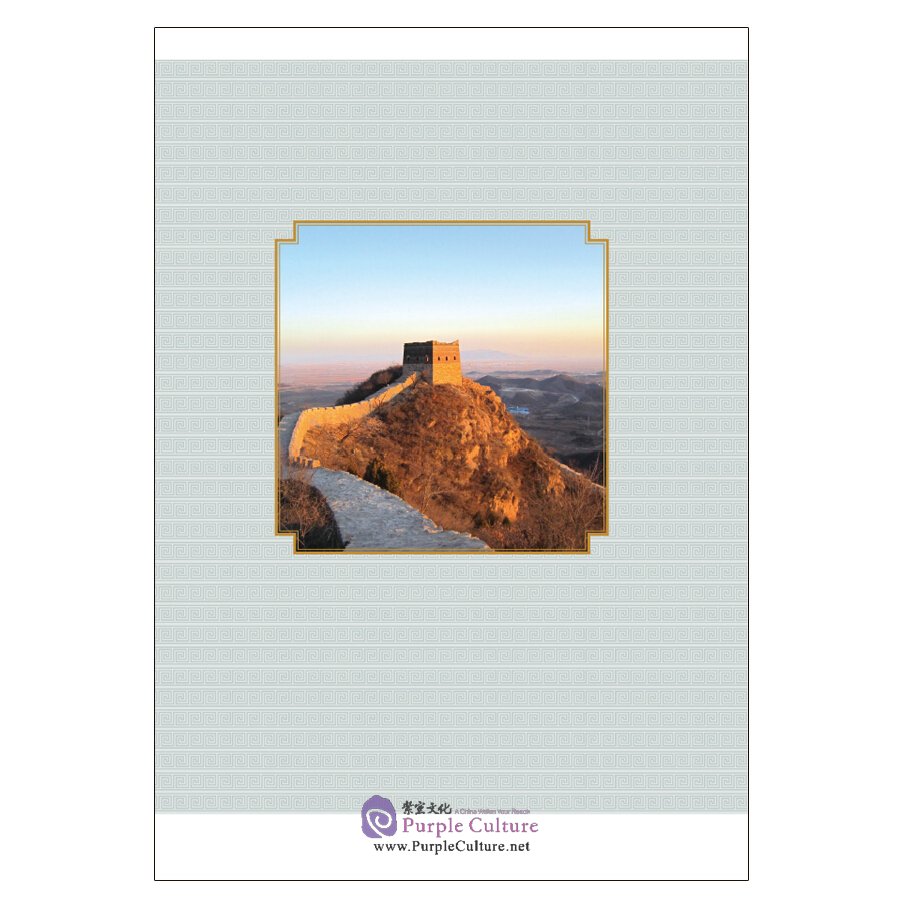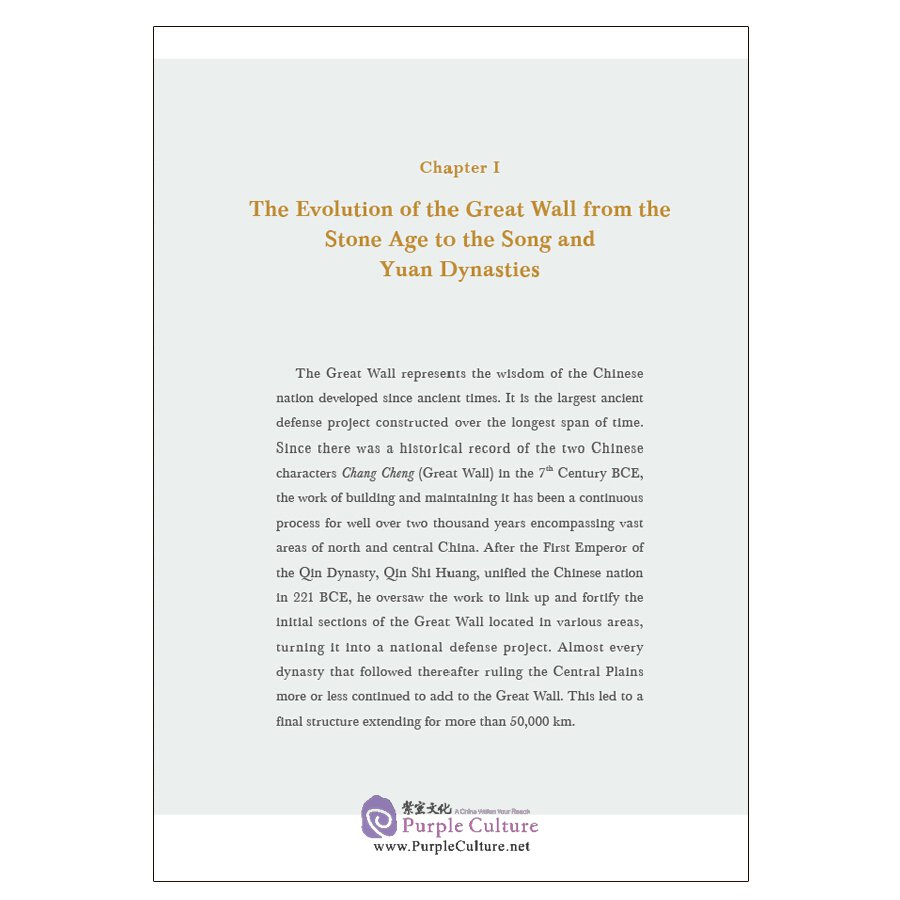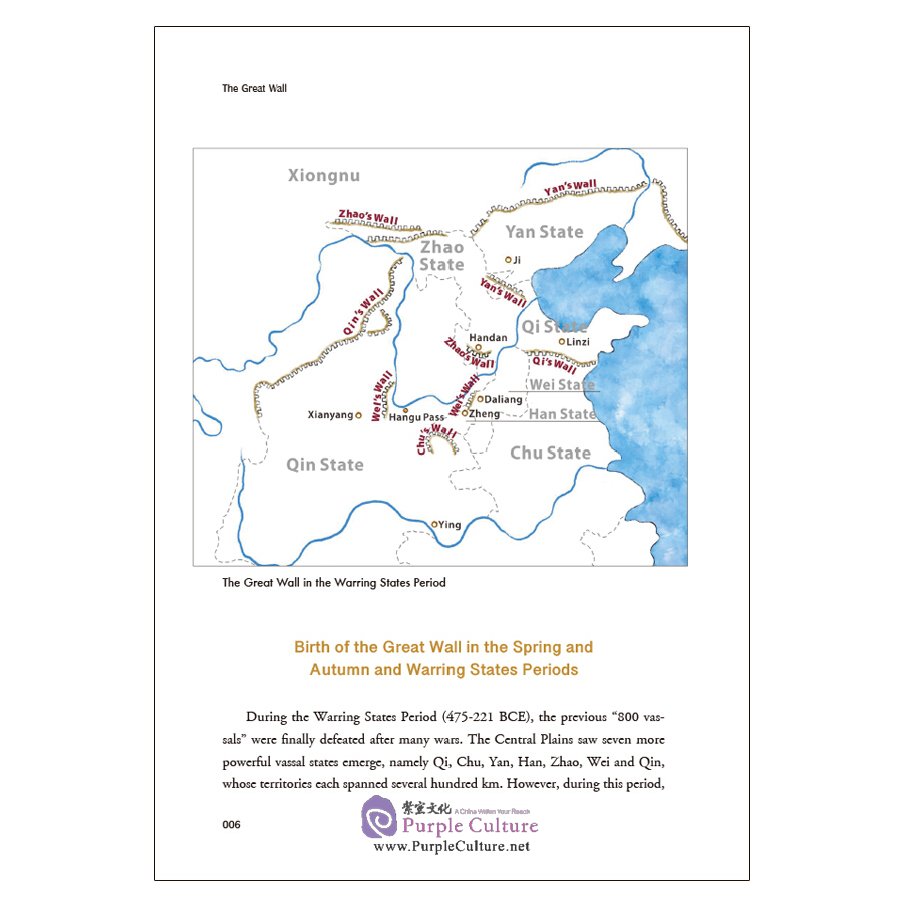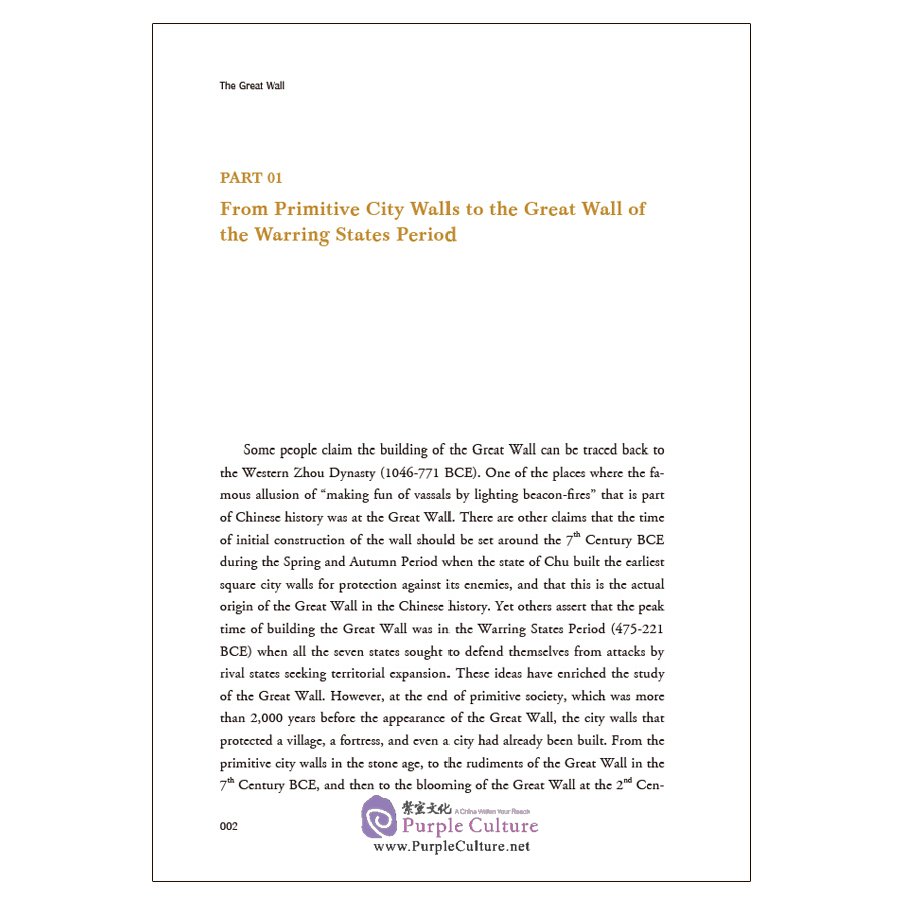Sample Pages Preview




 Preface
Preface
Preface
As a great symbol re??ecting the national spirit of China and its people, the Great Wall is the ??rst millitary project in ancient China, one of the seven mir- acles miraclesof the ancient world, is also a world cultural heritage. It has gone through a period of construction and renovation stretching over 2,000 years, representing a space-time dimension unmatched by other world cultural herit- age sites.
As early as the Spring and Autumn and the Warring States Period (770- 221 BCE) the states of the former began to build the early structures of the Great Wall to guard against attack. In the late Warring States Period, in order to resist an invasion by northern nomads, the Qin, Zhao, Yan and other states added new sections of what are known as the Yanshan and Yinshan lines of the northern border to prevent the rampaging cavalry from the steppes penetrating southwards. After the ??rst emperor of Qin (259-210 BCE) uni??ed China in 221 BCE, he took steps to connect up these various sections for the ??rst time, forming a system of national defense forti??cation. What emerged was a wall ex- tending from the Yalujiang River, to the east of Gansu Province, in a great arc across the northern part of the country—what we call the Great Wall today.
After the fall of the Qin Dynasty, the nomadic tribes such as the Huns, Xianbei and Rouran in the North dominated the grasslands and then sought to invade the Chinese hinterland once again. In order to prevent these attacks, the Great Wall was extended and strengthened by successive dynasties.
When the Ming Dynasty (1368-1644) replaced the Yuan Dynasty (1271- 1368) to rule over China, the Ming Great Wall extending some 8,000 km from Hushan in Liaodong of northern China, to Jiayu Pass in Gansu Province, was built partly to prevent a revival of the any Yuan remnants. In the ensuing Qing Dynasty (1644-1911), some renovation work of the Ming Great Wall was un- dertaken, so those parts we see today are the remains of the Great Wall of the Ming Dynasty.
With the history of the evolution of the Great Wall as the starting point, this book mainly covers the period of the Ming Dynasty, describing the mil- itary system known as the “nine important border towns”, the architectural structures, and the surrounding great historical events. It describes the evolu- tion of the Great Wall, and the customs and habits of people in the surround- ing areas.
The Great Wall bears the precious historical memory and national spirit of the Chinese nation. With the passage of time, many sections along its 5,000-km length have been destroyed, although the names remain. Sections of the Great Wall extant today, known almost to all, include Badaling, Shanhai Pass and Ji- ayu Pass.
The Great Wall is indeed magni??cent. I hope this book can bring readers different experiences of an Earth-based structure visible. The areas bisected by it include deserts and grasslands, rivers and the remains of enemy towers. May the words recorded here make it possible for readers to gain a better under- standing of this world historical heritage site.




 Preface
Preface